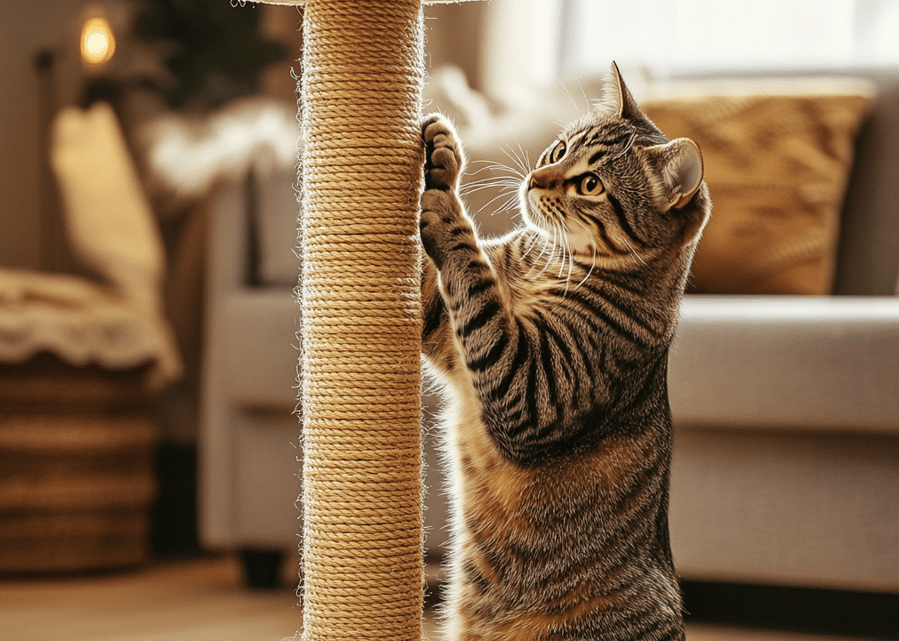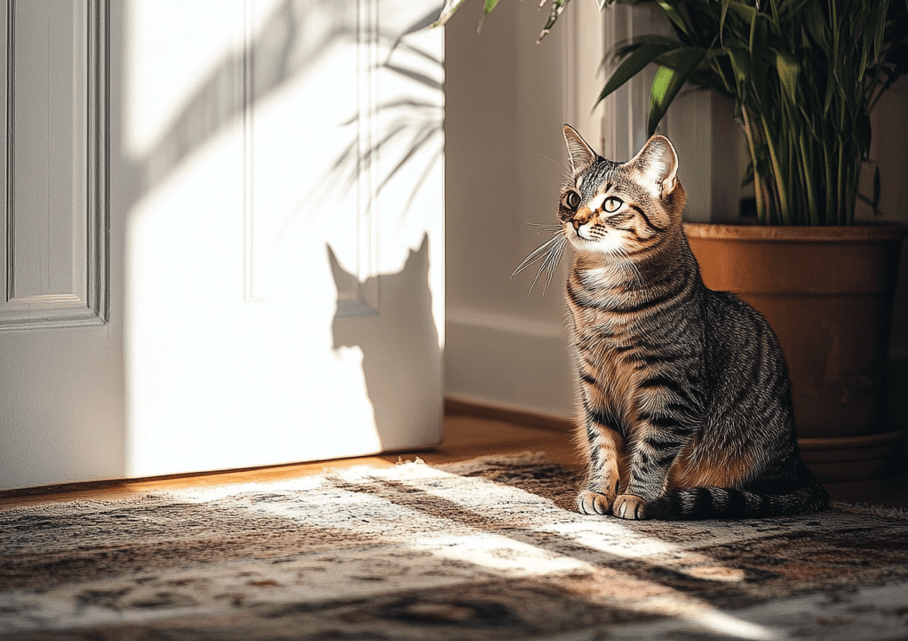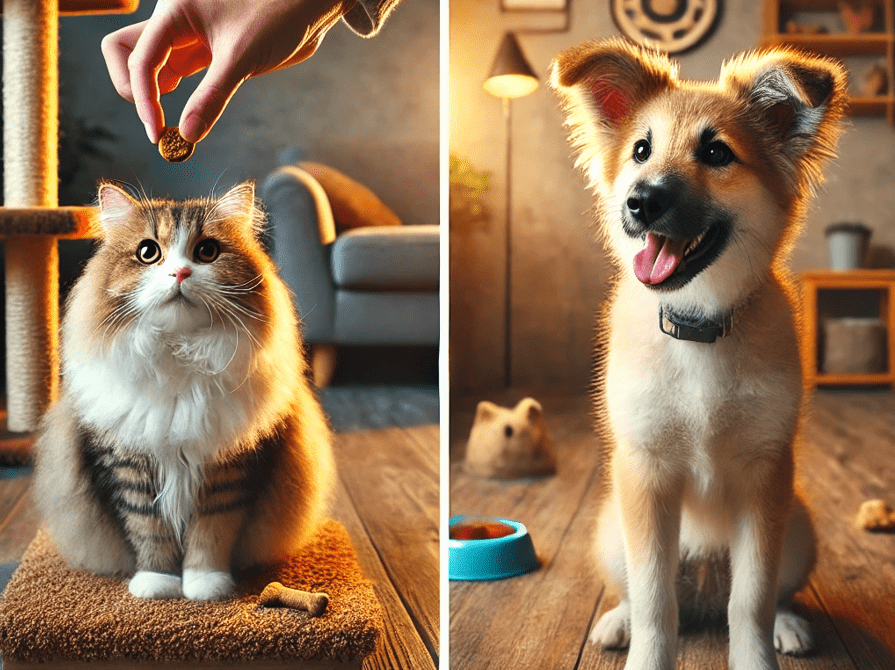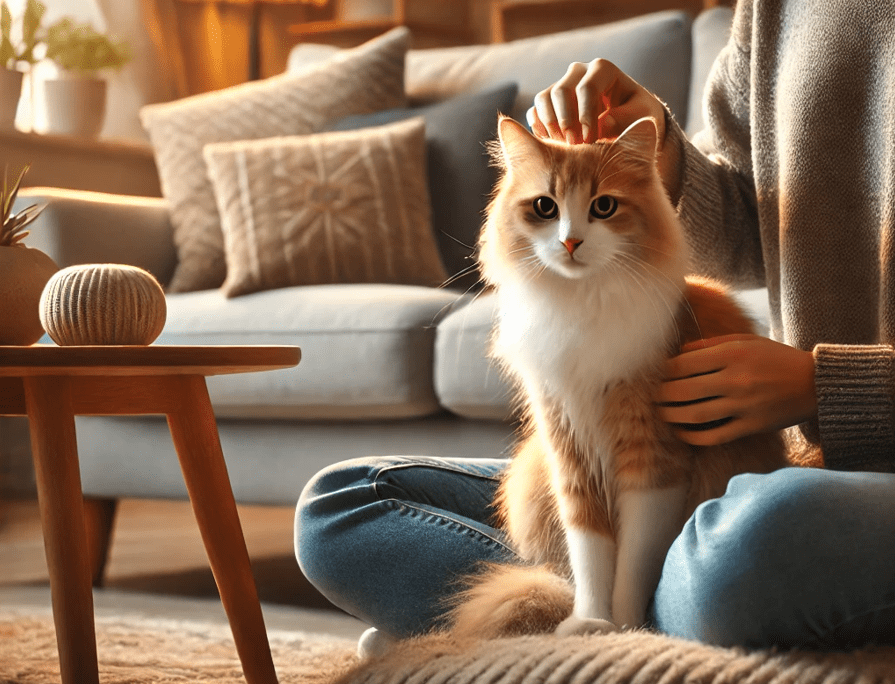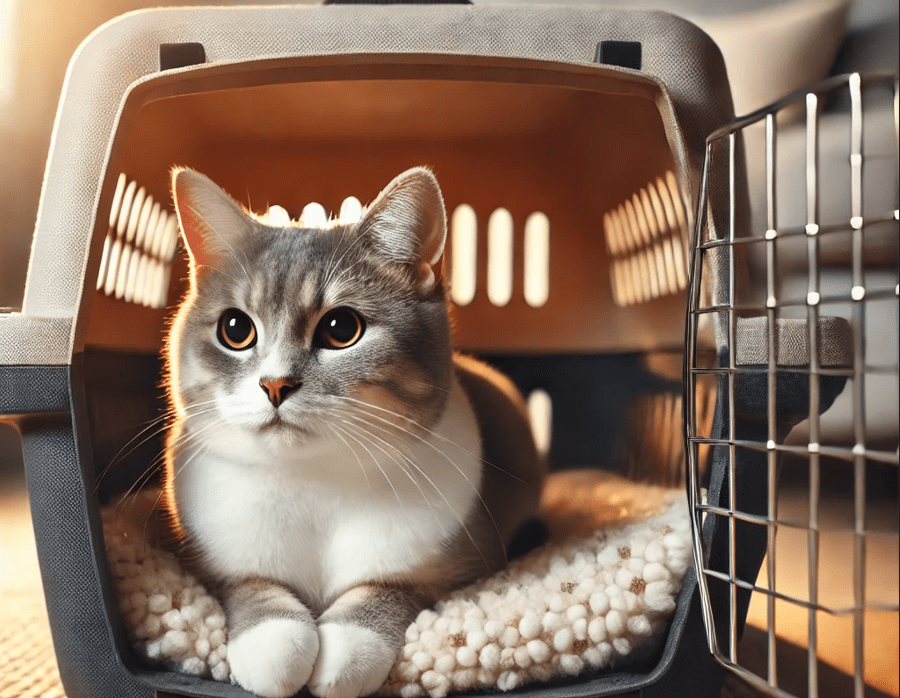
With the right preparation, visiting the vet with your cat can be a less stressful experience for both you and your furry friend. Practicing some of these steps at home — taking a step onto a scale, running your hands over your cat without reaching for a body part — can prepare your cat to be calmer when you’re in for a visit. Practicing more regularly will help your cat become less anxious, leading to a smoother, more pleasant visit to the vet.
To prepare your cat to visit the veterinarian, take time to train it on the particular procedures it may have to undergo during the visit. You could, for instance, practice quietly looking in your cat’s ears if they have ear problems. This enables your cat to associate these actions with safety instead of fear.
Unlike dogs, cats tend to have less exposure to new environments and unfamiliar individuals. They often feel safest at home, so a visit to the vet can be overwhelming for them. To prepare your kitty for the vet visit, enable his body and mind to feel more comfortable in those common tasks used during vetting. These include general handling, wearing a cone, and being transported in a carrier.
Carrier: Key Training Component
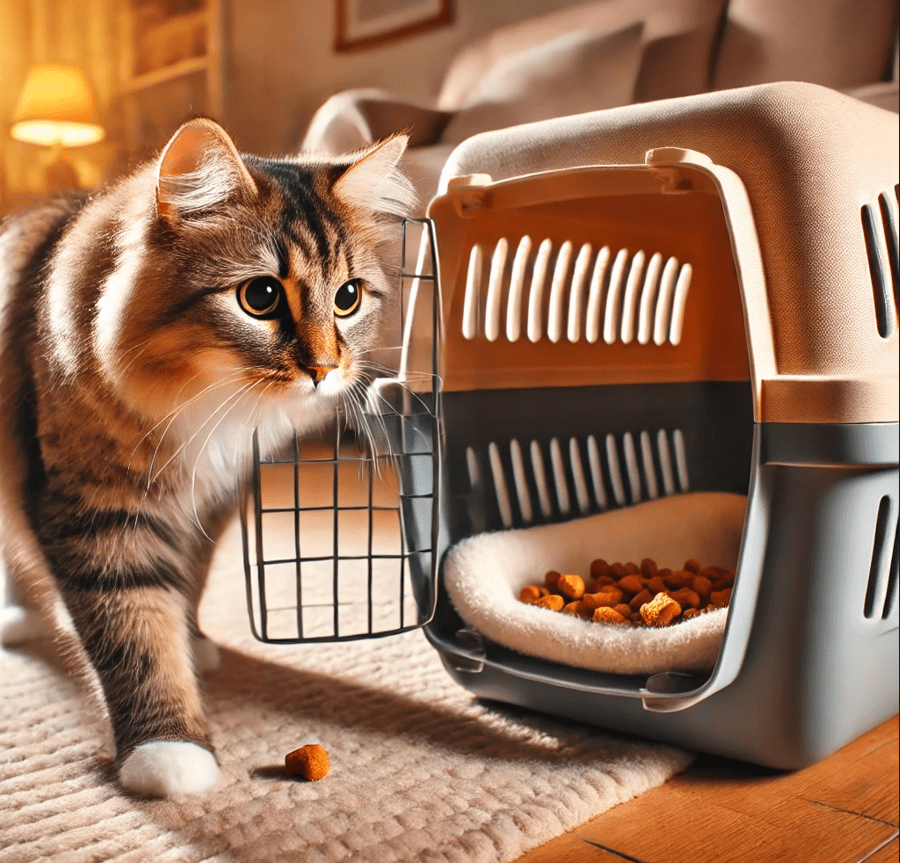
Preparing to go to the vet starts at home, and if your cat has not been trained to handle a carrier comfortably yet, this is the place to start training. Set the carrier in a familiar space and make it welcoming with soft bedding or treats. If your cat is resistant or has had bad experiences with the carrier, take some small steps to build its confidence. When your cat does show interest in the carrier — by looking at it, walking toward it or stepping inside — reward it with treats, food or play.
Never push your cat into the carrier, as that will only make it more terrified. Instead, allow your cat to explore in its own time. Drop treats around the carrier so your cat can be lured closer. Eventually, your cat will learn to link the carrier with wholesome experiences. Keep up this training until your cat is happy to sit in the carrier, hopefully with the door closed, for extended periods of time.
Following these procedures will allow your cat to better orient itself during the visit to the veterinarian, minimizing stress and allowing you all to leave the clinic with a considerably more pleasant experience.
The Veterinary Examination
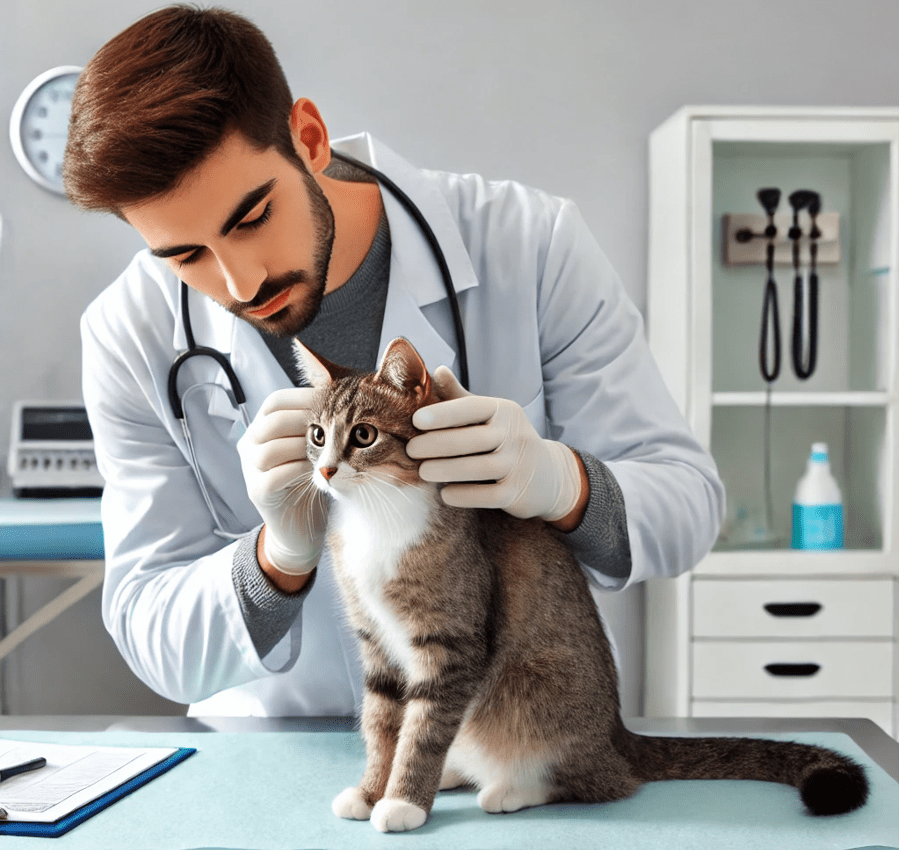
During a vet visit, a full examination will be conducted on the cat. This typically involves the vet checking the cat’s eyes, mouth and abdomen, as well as palpating its legs and paws and listening to its heartbeat. If the cat has certain concerns, such as limping or ear problems, those areas will be looked more closely at.
You need to do proper training to get your cat ready for such types of exams in a calm and patient manner. Make sure to read the cat’s body language. If the cat really struggles to stay on the table, work on this as a starting point. Touch various parts of its body and follow it up with a treat. If the cat is not comfortable with certain areas, spend a little extra time in your training of it. However, do not try to squeeze the kitty too much as this can scare or stress it, so it will become harder to perform checks in the future.
Looking in the mouth and eyes can be especially uncomfortable for cats because the vet might need to hold their head or open their mouth. Doing this at home can get your cat used to the process.
Another common part of the exam is getting the cat’s temperature. It can be difficult to practice this exactly at home, but you can get your cat comfortable with being held gently and its tail lifted. It’s also useful to take your cat’s temperature at home every now and then so that you know what normal is for them.
Unfamiliar Objects
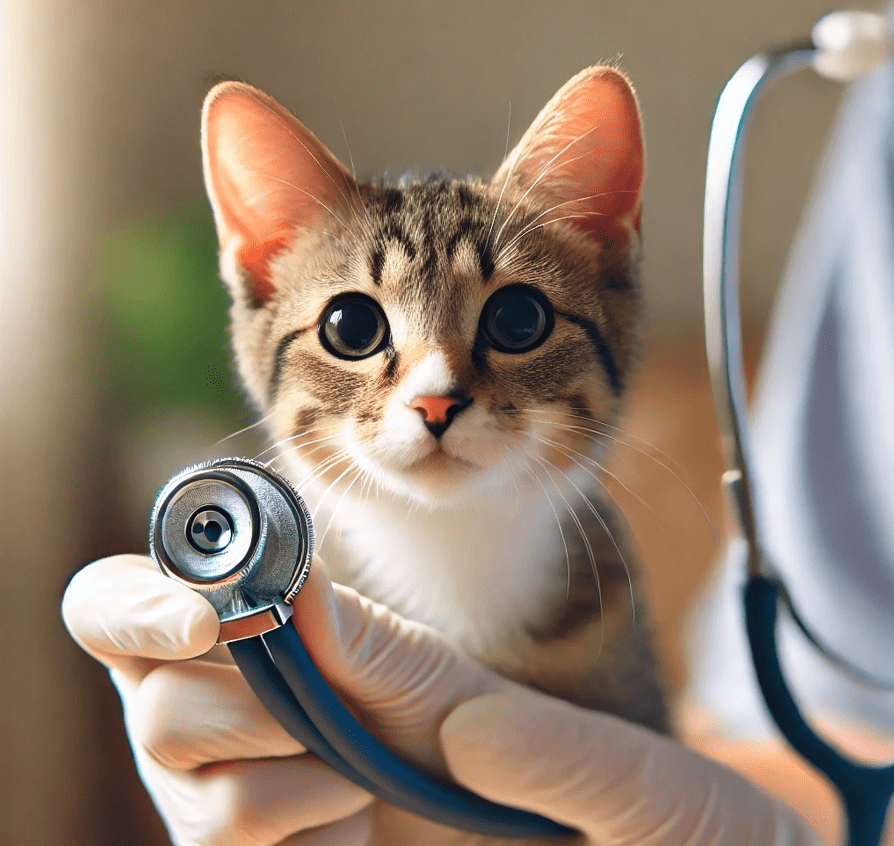
During the exam, the vet may use tools that may seem very strange to the cat such as, a chip reader (which is placed over the neck to register the microchip) or a stethoscope (which will feel cold when placed on the chest). You can practice bringing out similar objects at home. For example, hold up your phone for a chip reader or a spoon for a stethoscope.
Bring these objects out one at a time and give the cat a chance to sniff them, if it feels like. Then, carefully set the object on the body part that relates to the body part that you need to reassure. As always, reward your cat with a treat, afterward, to create a positive association with this too. This will make your feline feel more comfortable during real vet visits.
Blood Tests
Blood tests are also the best way to confirm or rule out some diseases in cats. Blood is usually taken from the front legs or neck. Although this procedure is typically done in the clinic by a veterinarian, you can help prepare your cat at home by practicing some of these steps. These are: Holding your cat; desensitizing your cat to the sound of a shaver; applying gentle pressure around the elbow; wetting a small area of the leg.
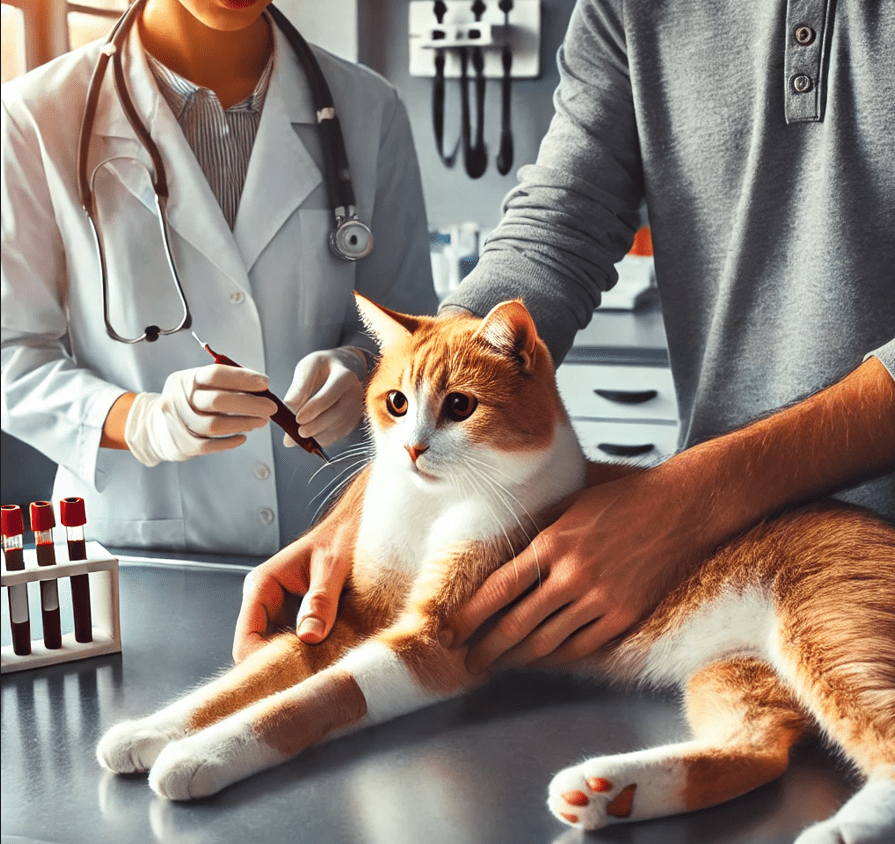
For a successful blood test cat has to stay still for a long time. This is great practice to do at home! Keep in mind that cats generally are averse to being held tightly, so practice putting them in your arms gently, but with enough firmness, securely. One hand gently holds their body and the other supports under the chin. As this is the most common position in a blood draw, practice this on a table with the cat facing away from you. Avoid boredom and reward your cat for staying calm by keeping sessions short.
Some cats can be sensitive to shaver sounds, which are often used to clear hair before drawing blood. Whenever you bring a shaver into the house, you can help your cat get used to the sound by playing the sound of a shaver at low volume and bring it closer gradually. If the sound stops, give your cat treats for positive reinforcement.
When you do the blood draw, before you do it, you can take a rubber band or hair tie, and apply some slight pressure to the paw. Pop it gently on top of the elbow, pulling it a little to the side but not wrapping it tight around the leg. Always take things at your cat’s pace, making sure they are comfortable, and reward them for cooperating.
Then practice getting the area wet where the blood will be drawn. This time, with your cat facing you, use a damp cotton ball or paper towel to gently wipe the front of the leg, rewarding afterward.
X-rays
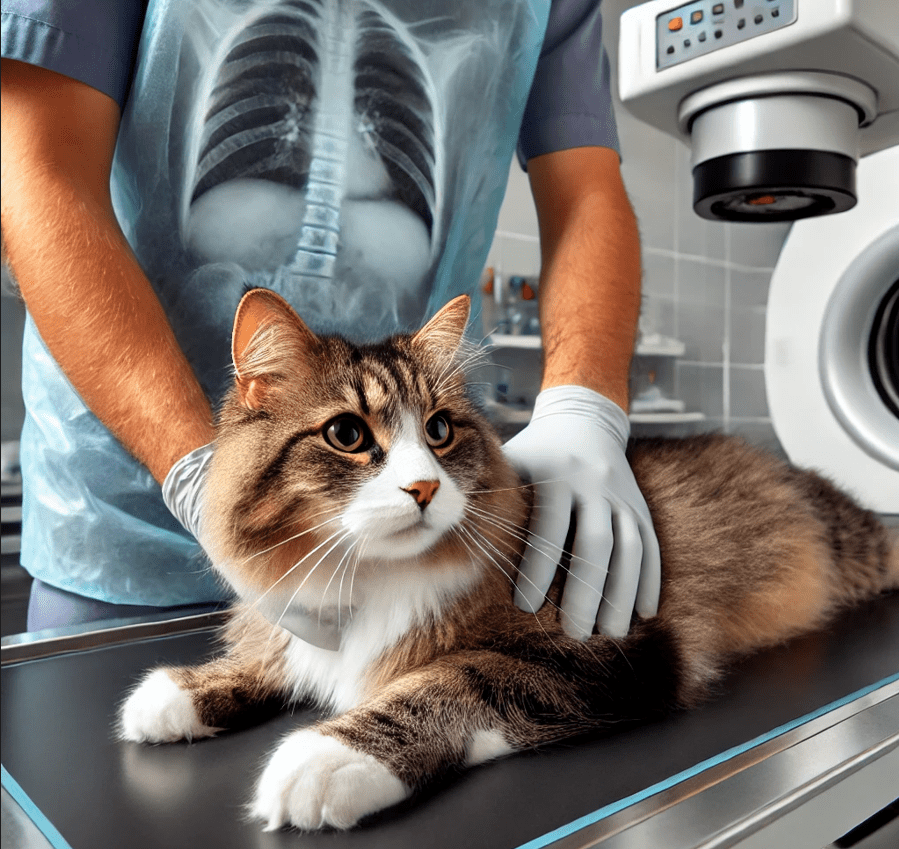
Sometimes X-rays are used to diagnose medical conditions. Your cat will usually be lying on its side or back depending on which area is the target of investigation. These positions can be uncomfortable so it helps to practice them at home.
Use treats or steady the cat in a horizontal position to train your cat to lie down. Be generous in reward and practice on both sides. It may be more difficult for them to lie on their back. Help your cat into this position and support them to remain straight. Take it slow to keep them comfortable, as forcing the issue could lead to more stressful vet visits in the future.
The Cone
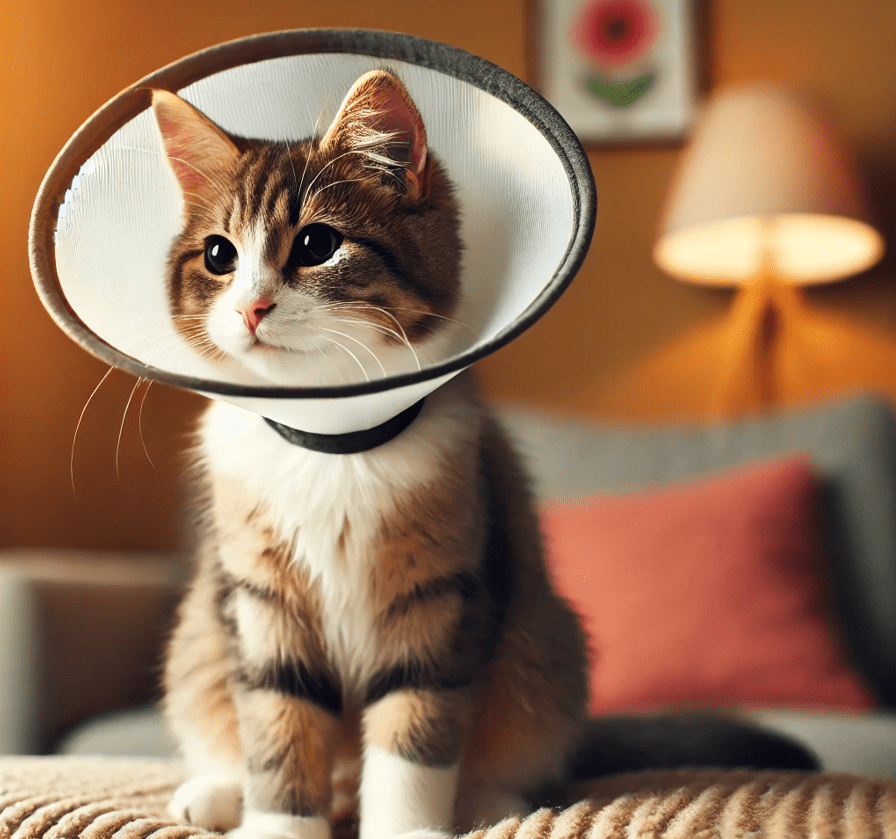
After some procedures, cats may need to wear a cone to prevent licking or scratching of the affected area. This can be fraught if they’re not used to it. First, introduce something they are more used to, such as a paper cone, and reward your cat for getting closer to it. Then work with them on wearing the cone for longer periods.
If your cat has to have a cone on around mealtime after a vet visit make sure you remove during meals or if you need to clean other portions of your cat.
Why Training is Important

You may ask, why do we even need to train our pets for vet visits if they only need to go once a year or even less? A single negative incident can set your kitty up for lifelong fears or anxiety, however. Training not only relieves the stress of a vet visit, but builds your relationship with your cat. And it’s fun and a rewarding experience for you both!

